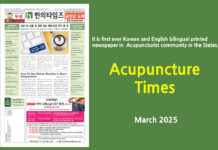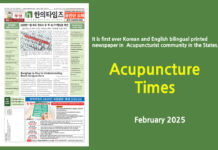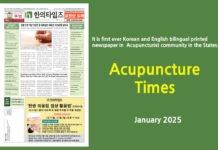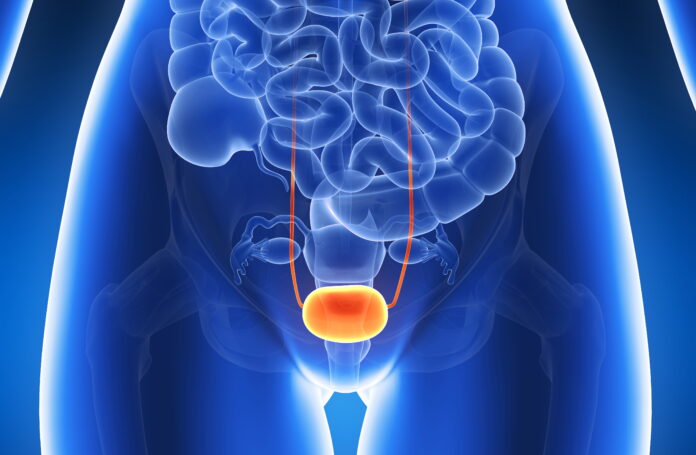01 Shape of the Bladder 膀胱形象 방광의 형상
① As an empty organ, the bladder can accept water and functions as the home of fluid and humor [津液之府]. It has an upper entrance but no lower exit. Once the qi from the sea of qi is ransformed, urine is able to flow; if qi from the sea of qi is deficient, urine becomes blocked, and unable to flow.
② Its circumference is 2.5 chon at the entrance and 9 chon in the middle. The bladder holds 9 doe and 9 hop of urine, and weighs 9 nyang 2 su.
02 Area of the Bladder 膀胱部位 방광의 부위
① The bladder is located inside the lower stomach.
② The acupuncture point CV3 is the alarm point of the bladder meridian (BL) and is located 4 chon below the navel. On the back, BL28 is located on both sides below the 19th vertebra. Such is the area pertaining to the bladder.
03 Functions of the Bladder 膀胱傳受 방광이 하는 일
① Once water and fluid is filtered in the small intestines and absorbed into the bladder, the po (胞) transforms it into urine and excretes it.
② Even though the bladder is the home of fluid and humor [津液之府], the reason it is able to accept and keep the fluid and humor is because there is po (胞) inside the bladder. The Classified Compilation on Nurturing Life said, “bladder is the home of po (胞).”
04 External Signs of the Bladder 膀胱外候 방광의 외후
① If the nostrils face the outside, urine leaks from the bladder.
② Because the kidneys correspond with bone, if the interstices are tight and the skin is thick, the triple energizer and the bladder are also thick. If the interstices are rough and the skin is thin, the triple energizer and the bladder are also thin. If the interstices are loose then so are the triple energizer and the bladder; if the skin is right and has few soft hairs, the triple energizer, and the bladder are also tight. If the soft hairs are supple and thick, the triple energizer, and the bladder are straight and if there are few soft hairs, the triple energizer and the bladder are knotted together.
05 Bladder Disease Patterns 膀胱病證 방광병증
① If the bladder is diseased, one side of the lower abdomen swells and there is pain. Upon compression of the swelling, one feels the need to urinate but is unable to do so. Moreover, there might be fever around the shoulders, or areas of the bladder meridian might show visible pitting. A local fever can be felt at the lateral corner of the little toe and the areas behind the shin and the ankle bone.
➁ If there is a problem with the flow of the bladder, urination becomes difficult; if the bladder isn’t tightened sufficiently, enuresis occurs.
③ If the bladder is diseased and heat is accumulated in the lower energizer, the lower abdomen feels bloated and distressed and the po (胞) is turned inside out which leads to difficult urination and manic psychosis. If the bladder is cold, the dampness-phlegm overflows which leads to drooling, dribbling urination, and/or enuresis.
06 Treatment Methods of Bladder Diseases 膀胱病治法 방광병 치료법
① If the bladder is weak and urine cannot be held, one should use an Instant Relief Pill or Modified Eight Ingredient Decoction with doubled Corni Fructus (山茱萸) and added Linderae Radix (烏藥), Alpiniae Oxyphyllae Fructus (益智仁) and Psoraleae Semen (破故紙) [see the chapter on kidneys for the prescription] for blockage of urine due to bladder excess, one should use Augment Base Powder [see the chapter on Summer-heat for the prescription] and Malvae Semen Decoction.
② Five Ingredients with Poria Powder [see the chapter on Cold for the prescription] is the main prescription for the bladder.
Instant Relief Pill 旣濟丸 기제환: It treats the condition of not being able to hold the urine due to a bladder deficiency. 5 pun each of Cuscutae Semen (兎絲子) (processed with wine), Alpiniae Oxyphyllae Fructus (益智仁) (stir-fried), Poria Sclerotium (白茯苓), Allii Tuberosi Semen (韭子) (stir-fried), Cistanchis Herba (肉蓯蓉) (washed with wine), Angelica Gigantis Radix (當歸), and Rehmanniae Radix Preparata (熟地黃), 3 don each of Phellodendri Cortex (黃柏) and Anemarrhenae Rhizoma (知母) (moistened in salty water and stir-fried together) Ostreae Testa (牡蠣) (heated), and Corni Fructus (山茱萸) (steamed with wine and seeds removed), and 1 don of Schisandrae Fructus (五味子). Grind up these herbs and make a dough using flour paste with wine to form pills as big as the seed of a royal foxglove tree. Take 100 pills with salty water on an empty stomach.
Malvae Semen Decoction 葵子湯 규자탕: It treats the condition of not being to urinate due to excess heat. 1 don each of Malvae Semen (冬葵子), Poria Sclerotium Rubra (赤茯苓), Polyporus (猪苓), Ponciri Fructus Immaturus (枳實), Dianthi Herba (瞿麥), Talcum (滑石), Akebiae Caulis (木通), Scutellariae Radix (黃芩), Plantaginis Semen (車前子), and Glycyrrhizae Radix (甘草). Slice up these herbs and decoct them in water with 5 pieces of Zingiberis Rhizoma Crudus (生薑) as 1 package.
07 Symptoms for Expiration of Bladder Qi 膀胱絶候 방광기가 끊어지는 징후
① Enuresis, manic raving, flipping of the eyelids, and staring straight forward are signs that bladder qi has expired.
② The bladder meridian (BL)is the foot greater yang meridian. If its qi is expired, the eyes face upward, the body bends backwards, chronic convulsions happen, facial complexion turns white, and expiry sweating occurs. Once it reaches the expiry sweating stage, death is imminent.
08 Simple Prescriptions 單方 단방
There are 17 kinds in total.
∙ Alismatis Rhizoma 澤瀉: It lowers the heat in the bladder and facilitates urination. Take decocted.
∙ Foeniculi Fructus 茴香: It heats up the bladder and gets rid of cold qi. Stir-fry, grind into powder, and ingest directly in little doses or in decocted form.
∙ Sinomeni Caulis et Rhizoma 防己: It rids the bladder of heat. Cut up and decoct in water.
∙ Pyrrosiae Folium 石韋: It removes the heat filling the bladder. Decoct in water.
∙ Kochiae Fructus 地膚子: It is usually used for heat in the bladder and facilitates urination. Take in decocted form or powder form.
∙ Dianthi Herba 瞿麥: It drives out pathological qi from the bladder and facilitates urination. Decoct in water.
∙ Thujae Semen 柏子仁: It removes cold pus or stagnant water from the bladder. Take in the form of either powder or pills.
∙ Clematidis Radix 威靈仙: It rids the bladder of stagnant pus and noxious water. Take in powder form or decocted form.
∙ Pruni Nakaii Semen 郁李仁: It treats a tightening sensation and pain in the bladder. Take in powder form or tablets.
∙ Citri Unshius Pericarpium Immaturus 靑橘皮: It gets rid of the heat and stagnated water in the bladder. Take in decocted or powder form.
∙ Phellodendri Cortex 黃柏: It purges heat from the bladder and facilitates urination. Take in decocted form or tablets.
∙ Linderae Radix 烏藥: It is mainly used for pain caused by cold, located between the bladder and the kidneys. Take in decocted form or in small doses of powder.
∙ Zanthoxyli Pericarpium 椒目: It is mainly used for the pulling sensations of the bladder. Take in decocted form or in tablets.
∙ Suis Rene 猪腎: It facilitates flow in the bladder and also tonifies the bladder. Boil in water and ingest both the kidneys and soup. The pig bladder is better.
∙ Evodiae Fructus 吳茱萸: It heats up the bladder. Decoct in water.
∙ Laminariae Japonicae Thallus 昆布: It treats the tightening sensation and prickliness of the bladder and pulls water qi downward. Cut up 4 nyang, add 3 stems of Allii Fistulosi Bulbus (葱白), and boil sufficiently. Afterwards, mix with Zingiberis Rhizoma Crudus (生薑), Zanthoxyli Pericarpium (川椒), and salt, and ingest the mixture.
∙ Piscis Caro 魚膾: It gets rid of water in the bladder. Mix with Zingiberis Rhizoma Crudus (生薑), vinegar, and garlic, and ingest the mixture.






































